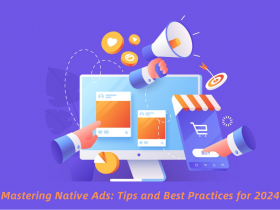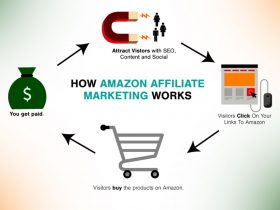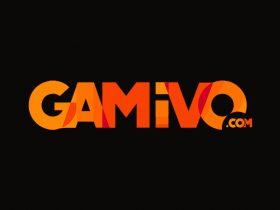Monetizing a content website can be done in several ways, including:
Advertising:
Advertising is a popular way to monetize a content website. There are several different types of advertising that you can use, including:
- Display ads: These are banner ads that are displayed on your website. They can be sold directly to advertisers, or you can use a network like Google AdSense to display ads that are relevant to your audience.
- Native ads: These are ads that are designed to blend in with the content on your website. They are often sponsored content that is written by advertisers and designed to match the tone and style of your website.
- Video ads: These are ads that are displayed before, during, or after a video on your website. They can be skippable or non-skippable, and they can be sold directly to advertisers or through a network.
- Sponsored content: This is content that is created by advertisers and promoted on your website. It can take many forms, including product reviews, sponsored posts, or sponsored social media campaigns.
When it comes to advertising, it’s important to strike a balance between monetization and user experience. You don’t want to overwhelm your audience with too many ads or make your website difficult to navigate. It’s also important to ensure that the ads you display are relevant to your audience and align with your website’s values and mission.
Affiliate marketing:

Affiliate marketing is another popular way to monetize a content website. With affiliate marketing, you promote other companies’ products or services on your website and earn a commission on any sales made through your unique referral link.
- To get started with affiliate marketing, you can sign up for affiliate programs with companies that offer products or services that are relevant to your audience. You can find affiliate programs through affiliate networks like Share A Sale, Commission Junction, or Amazon Associates, or by reaching out directly to companies that you want to promote.
- Once you’re accepted into an affiliate program, you can start promoting the products or services on your website. This can be done through product reviews, sponsored posts, or banner ads. When your audience clicks on your unique referral link and makes a purchase, you earn a commission on the sale.
- To be successful with affiliate marketing, it’s important to choose products or services that are relevant to your audience and align with your website’s niche and values. You also want to make sure that your promotions are transparent and honest, and that you disclose your affiliate relationship to your audience. Finally, it’s important to track your affiliate links and earnings so that you can optimize your promotions and maximize your revenue.
Sponsored content

- Sponsored content is a way to monetize a content website by partnering with businesses to create content that promotes their products or services. Sponsored content can take many forms, including product reviews, sponsored posts, or sponsored social media campaigns.
- To create sponsored content, you’ll need to identify businesses that are interested in promoting their products or services on your website. This can be done by reaching out directly to companies, or by joining influencer marketing networks like AspireIQ or Activate.
- Once you’ve established a partnership with a business, you can create content that promotes their products or services. This content should be transparent and clearly labeled as sponsored, so that your audience knows that it’s promotional in nature. You should also make sure that the content aligns with your website’s values and mission, and that it’s useful and engaging for your audience.
- When creating sponsored content, it’s important to maintain your authenticity and credibility as a content creator. You don’t want to promote products or services that you don’t believe in or that are irrelevant to your audience. It’s also important to comply with advertising disclosure rules and regulations, so that your audience understands the nature of the sponsored content.
Membership or subscription model:

- A membership or subscription model is a way to monetize a content website by offering premium content or features to users who pay a fee. This can be a good option for websites that offer high-quality, exclusive content that users are willing to pay for.
- To implement a membership or subscription model, you’ll need to decide what kind of content or features you want to offer to your paid members. This could include access to exclusive articles, videos, podcasts, or forums, as well as perks like early access to new content, ad-free browsing, or discounts on merchandise.
- Once you’ve decided on your membership or subscription offering, you’ll need to choose a platform to manage your paid members. There are several options available, including Patreon, Substack, or WordPress plugins like MemberPress or Restrict Content Pro.
- When setting your membership or subscription fees, it’s important to consider what your audience is willing to pay, as well as the costs associated with creating and managing premium content. You may also want to offer different tiers of membership or subscription, with different levels of access and benefits at different price points.
- To be successful with a membership or subscription model, it’s important to deliver high-quality, exclusive content or features that are worth the cost to your members. You should also communicate the value of your offering clearly to your audience, and engage with your members to build a strong community around your website.
E-commerce:

- E-commerce is another way to monetize a content website, by selling products or services directly to your audience. This can be a good option if your website focuses on a specific niche and you have a product or service that aligns with your audience’s interests.
- To set up an e-commerce store, you’ll need to choose a platform that supports online sales, such as Shopify, WooCommerce, or Magento. You’ll also need to decide what products or services you want to sell, and how you’ll handle inventory, shipping, and customer service.
- When setting up your e-commerce store, it’s important to design a user-friendly website that makes it easy for customers to find and purchase products. You should also create compelling product descriptions and images, and offer secure payment options to build trust with your customers.
- To promote your e-commerce store, you can use content marketing strategies like blog posts, social media, or email newsletters to drive traffic to your website. You may also want to consider using paid advertising or influencer partnerships to reach new audiences and build brand awareness.
- To be successful with e-commerce, it’s important to offer high-quality products or services that meet your audience’s needs and expectations. You should also provide excellent customer service to build loyalty and encourage repeat purchases. Finally, it’s important to track your sales and analytics so that you can optimize your website and product offerings over time.
Conclusion
There are many ways to monetize a content website, from advertising and affiliate marketing to sponsored content, membership or subscription models, and e-commerce. The best approach will depend on your website’s niche, audience, and goals, as well as the type of content or products you offer.
Regardless of the monetization strategy you choose, it’s important to maintain the quality and authenticity of your content, and to prioritize your audience’s needs and interests. By providing value to your readers and building a strong community around your website, you can create a sustainable and profitable business model that supports your content creation efforts over the long term.
FitSpresso is a groundbreaking online platform crafted to revolutionize weight management. Designed for effortless navigation, it boasts a suite of tools to monitor weight, oversee dietary habits, and prompt daily activity. By inputting meals and snacks, users gain valuable insights into how their food choices impact their weight loas journey. Tailored recommendations align with personal health objectives, empowering users to make educated decisions regarding diet and lifestyle. Moreover, FitSpresso houses an extensive nutritional database, simplifying food tracking. Prioritizing convenience and inclusivity, FitSpresso aims to empower individuals struggling with weight issues, guiding them toward optimal health and well-being.




















Leave a Reply